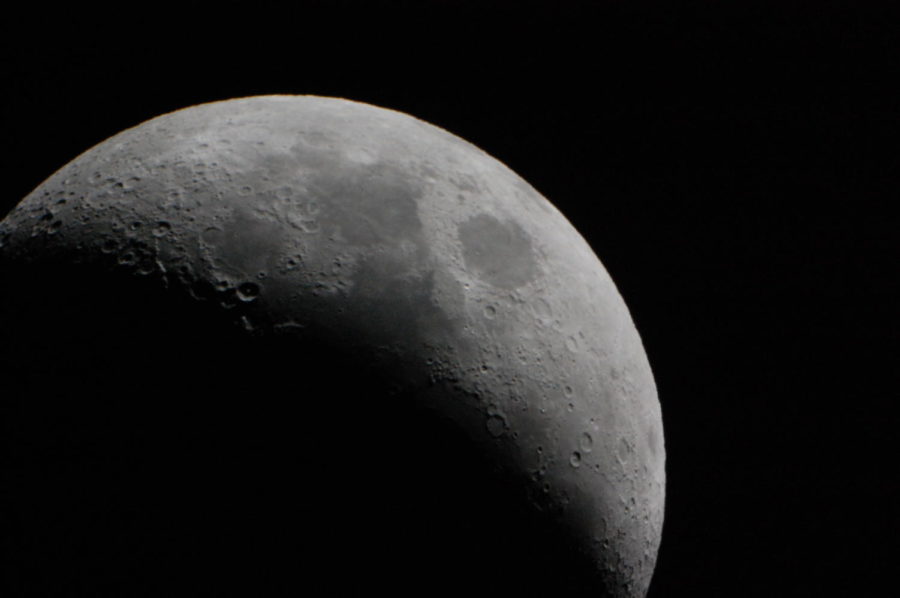Helium-3
One of the most pressing matters in the world right now is the use of fossil fuels for energy as market demand for such energy grows despite growing scarcity and increasingly harmful effects. However, with previous missions to the moon and the most recent achievements accomplished by the Chinese, it is clear that this is a problem that may be solved in the near future.
A promising solution to the issue of fossil fuels presents itself in “Helium-3”, an isotope of the element Helium. In order to understand the importance of the isotope, it is essential to understand its efficiency and environmental friendliness. This resource is estimated to be able to yield vast amounts of energy from relatively small amounts. To put this into perspective, only 25 tons of Helium-3 would be able to power the entirety of the US for one day. Nearly seven times this amount could be carried by a large cargo ship and the original amount of 25 tons by one loaded space shuttle. Additionally, the resource may serve as a cleaner alternative to current energy sources. For around 40 years, scientists had tried to find an alternative to using nuclear fission in order to create energy. The fission of uranium has been the typical method of creating energy within nuclear reactors, but it leads to the creation of radioactive waste which needs to be monitored and well taken care of for what is basically forever. This has led scientists to seek a less wasteful source of energy. Helium-3 may serve as an alternative, allowing for energy based on the combination of atoms, a process that does not produce radioactive waste, rather than the dangerous splitting of unstable atoms.
However, despite the prospects that Helium-3 provides in terms of energy, it is important to understand why such a benefit is currently not so achievable. Helium-3 is a very scarce isotope of Helium on Earth. It accounts for around 0.0001% of all helium on the planet according to planetary science research, effectively making it impossible to use as a viable source of energy.
The scarcity of the isotope may cause the hopes of using it for power to vanish. However, there still seems to be hope. Helium-3 is a very common isotope of helium on the moon and is estimated to be as abundant as 1.1 million metric tonnes from the lunar surface to a few meters deep. It is believed that the buildup of Helium-3 on the moon is due to the sun’s solar wind carrying the resource onto the moon over the course of billions of years.
But how could this be beneficial if the isotope is only this widespread on the moon? With growing attempts by world powers to expand their influence outside of the globe and into space, it is becoming evident that lunar mining may be a possibility.
Around 2017, the Artemis program led by NASA had begun. The goal of Artemis is to have humans on the moon again for the first time since the Apollo program put humans on the moon in 1972. However, unlike the Apollo program, Artemis aims to send humans to stay on the moon. The program has interacted with several different space companies in order to determine who will assist in creating a vessel to transport astronauts to the moon in 2026. SpaceX’s starship seems to be the clear choice that NASA has picked, with the Artemis-3 mission aimed to be launched by 2026 and have the SpaceX Starship HLS assist in transporting astronauts from Earth to the lunar surface.
Recently, the Artemis program launched its first rocket of theirs (Artemis I) to the moon, providing insight into how the missions of Artemis II in 2024 and Artemis III in 2026 will go. On the eastern side of the world, the Chinese have allegedly managed to transport Helium-3 itself from the moon to Earth via the Chang’e 5 mission in 2020. All of these recent advances in aerospace engineering and astronomical research seem to hint at humanity reaching a point where it will finally extend outwards from Earth and into space—providing hope for Helium-3 as the world’s next great energy source.
Sources:
https://www.explainingthefuture.com/helium3.html
https://www.nasa.gov/centers/johnson/pdf/167751main_FS_SpaceShuttle508c.pdf
https://physicsworld.com/a/helium-3-could-be-bound-up-with-iron-and-oxygen-deep-within-the-earth/
Your donation will support the student journalists of Dublin High School. Your contribution will allow us to purchase equipment and cover our annual website hosting costs.

Arya Ferozy is a Senior at DHS. During freshman year he worked on yearbook with other students and senior members of graphic publications. His interests...









![[Book Review] Weapons of Math Destruction: The insidious danger of Big Data](https://thedublinshield.com/wp-content/uploads/2024/06/wmdsarticle-727x1200.jpg)






















